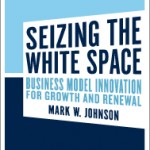May25
Crowdsourcing Moves Beyond Open Innovation
Point: Crowdsourcing is maturing beyond its amateur-content and open innovation origins toward core business processes.
Story:
In the beginning, companies used crowdsourcing as part of their open innovation efforts to get new  ideas from lead users, customers, and the world at large. But now, entrepreneurial companies such as Trada and CloudCrowd are moving beyond one-off design efforts and contests (e.g., the Netflix Prize) to encompass routine everyday business processes. As CloudCrowd CEO Alex Edelstein sees it, “similar to the way Henry Ford’s early assembly lines created a new, more efficient way to complete work, we’ve designed an online process that delivers accurate finished work for even complex projects at a significant savings.” Let’s look at these two examples.
ideas from lead users, customers, and the world at large. But now, entrepreneurial companies such as Trada and CloudCrowd are moving beyond one-off design efforts and contests (e.g., the Netflix Prize) to encompass routine everyday business processes. As CloudCrowd CEO Alex Edelstein sees it, “similar to the way Henry Ford’s early assembly lines created a new, more efficient way to complete work, we’ve designed an online process that delivers accurate finished work for even complex projects at a significant savings.” Let’s look at these two examples.
First, Trada Inc., which recently emerged from stealth mode private beta, offers crowds of pay-per-click experts who create paid-search marketing campaigns. Each vetted crowd member generates his/her own keywords, ad copy, and deep links to attract prospective pay-per-click customers to the client site. The result is a much broader span of keywords with less chance of overpaying for over-used common keywords. By giving access to the long tail of keywords, Trada executes campaigns at lower cost and with greater success than do traditional agencies with in-house employees.
customers to the client site. The result is a much broader span of keywords with less chance of overpaying for over-used common keywords. By giving access to the long tail of keywords, Trada executes campaigns at lower cost and with greater success than do traditional agencies with in-house employees.
Second, CloudCrowd has 18,000 registered workers who participate in its Labor-as-a-Service business. CloudCrowd’s project managers begin by breaking down a complex task into hundreds or thousands of smaller tasks. These tasks are then passed on to Cloudcrowd’s registered workers. CloudCrowd speeds delivery time and lowers costs in a wide range of BPO (Business Process Outsourcing) applications. Tasks that CloudCrowd has deconstructed include tracking the University of Southern California’s “lost alumni” and a wide range of web content creation tasks.
Both Trada and CloudCrowd eschew the winner-take-all model of contest-oriented crowdsourcing projects. Instead, they offer well-defined incremental pay for incremental results. In the case of Trada, an expert gets paid for each click-through of the ad that the expert created (Trada also offers pay-per-sale crowdsourced campaigns). CloudCrowd gives its workers a pre-agreed payment for each unit of work they successfully complete. In CloudCrowd’s case, a worker’s “success” is measured using a system of escalating peer reviews that are also crowdsourced.
Both Trada and CloudCrowd create carefully-cultivated crowds — more like reliable workforces than mobs of transient volunteers of dubious quality. Trada uses online testing and verified identities to ensure that its experts are really experts. CloudCrowd assesses each worker’s percentage of correctly-completed tasks to compute a Credibility Rating. Highly-rated workers gain access to higher-level, higher-paying tasks.
Action
- Evaluate which business processes might benefit from on-going outside expertise or labor
- Create clear tasks and clear rewards
- Create processes to vet or rate prospective crowd members on expertise or quality
- Use the crowd to monitor the crowd
Sources:
Personal interviews with Niel Robertson, CEO, Trada http://trada.com/
and Cloudcrowd (via email) http://www.CloudCrowd.com/
9 Comments »Innovation, open innovation, Social Media, Software tool











